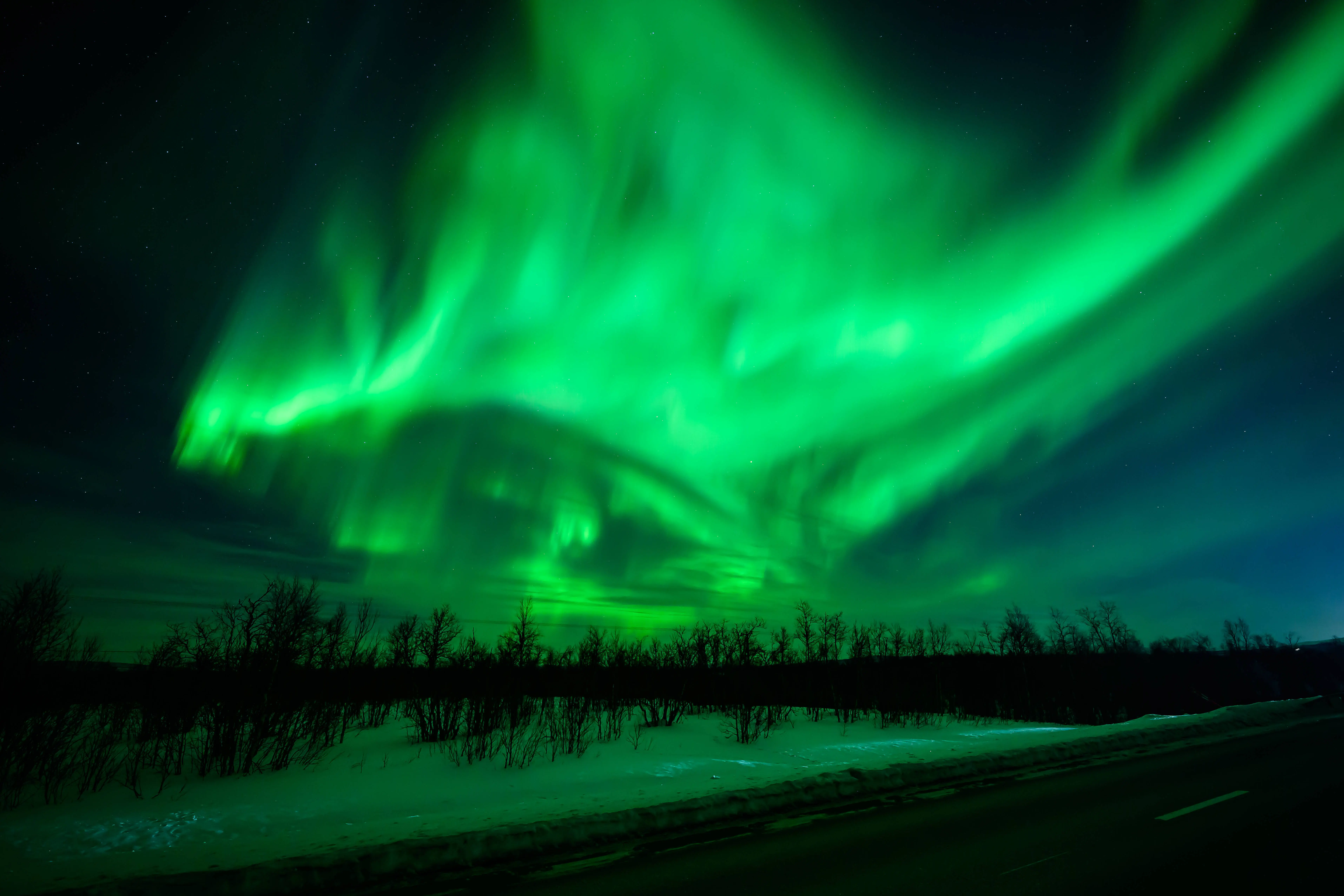Northern Lights may be visible in 14 US states from October 27 to 29 — here’s when and where to look
-
 KIRUNA, SWEDEN - MARCH 7: The Aurora Borealis, commonly known as the Northern Lights, are seen in the sky above Kiruna on March 7, 2024 in Kiruna, Sweden. The area is widely regarded as one of the best places in the world to see the phenomenon, which occurs when energized particles from the sun hit the Earth's upper atmosphere. (Photo by Leon Neal/Getty Images)
KIRUNA, SWEDEN - MARCH 7: The Aurora Borealis, commonly known as the Northern Lights, are seen in the sky above Kiruna on March 7, 2024 in Kiruna, Sweden. The area is widely regarded as one of the best places in the world to see the phenomenon, which occurs when energized particles from the sun hit the Earth's upper atmosphere. (Photo by Leon Neal/Getty Images)Sky gazers in the United States are in for a rare treat this week. The Northern Lights, or aurora borealis, could be seen in 14 states from October 27 to 29, according to space weather predictions.
The spectacular light show, normally visible near the Arctic Circle, may appear further south than usual due to high solar activity. For some, this might be one of the best opportunities to witness the natural phenomenon without having to travel far from home.
What’s causing this aurora event?
The Northern Lights occur when charged particles from the Sun strike Earth's magnetic field. These particles collide with gases in the atmosphere, generating shimmering waves of green, purple and pink light across the sky. This week's appearance is attributed to a geomagnetic storm caused by a coronal mass ejection (CME), an outburst of solar energy.
Solar eruptions propel streams of particles hurtling toward Earth, which can enhance auroras and cause them to be seen farther south than normal. The US National Oceanic and Atmospheric Administration (NOAA) issued a space weather alert, indicating that the storm might be powerful enough to produce visible auroras in the northern and central United States.
Where the Northern Lights may be visible
According to the NOAA Space Weather Prediction Center, the auroras could be visible across states, including:
- Washington
- Montana
- North Dakota
- South Dakota
- Minnesota
- Wisconsin
- Michigan
- Iowa
- New York
- Vermont
- New Hampshire
- Maine
- Oregon
- Idaho
Under the right conditions, some reports suggest the lights may even be faintly visible as far south as northern Pennsylvania or Oregon’s coast. However, visibility depends heavily on cloud cover, light pollution and solar intensity at the time of viewing.
Best time to watch
The best time to see the Northern Lights is typically between 10 p.m. and 2 a.m. local time. During this period, the skies are darkest, and solar activity tends to be more stable.
To get a clear view:
- Find a dark area away from city lights.
- Look toward the northern horizon.
- Allow your eyes to adjust to the darkness for at least 15 minutes.
Even if the lights don’t appear strong, cameras with long exposure settings may capture faint glows that aren’t visible to the naked eye.
How rare is this event?
Auroras are frequent in locations such as Alaska and Canada, but rare within the lower 48 states. Such activity typically occurs a few times every 11-year solar cycle, depending on the level of solar activity.
The Sun is currently in an epoch known as Solar Maximum, characterized by increased activity, including higher production of sunspots, flares, and CMEs. These active periods increase the chances of viewing the Northern Lights in areas located closer to the equator.
Safety and impact
The same solar storms that create beautiful auroras can also cause minor disruptions to radio signals, satellites and power grids. However, experts say there’s no cause for concern with this event, as the effects are expected to be minimal.
NOAA and NASA continue to closely monitor the situation, providing updates as solar activity evolves.
People in the northern United States may get a rare chance to see the Northern Lights without travelling far north. If the weather stays clear, the lights could appear as faint green or purple glows across the sky in several states.
The best time to look will be between October 27 and 29. Viewers can go to a dark, open area away from city lights and look toward the northern horizon for the best chance to see the display.
TOPICS: Northern Lights